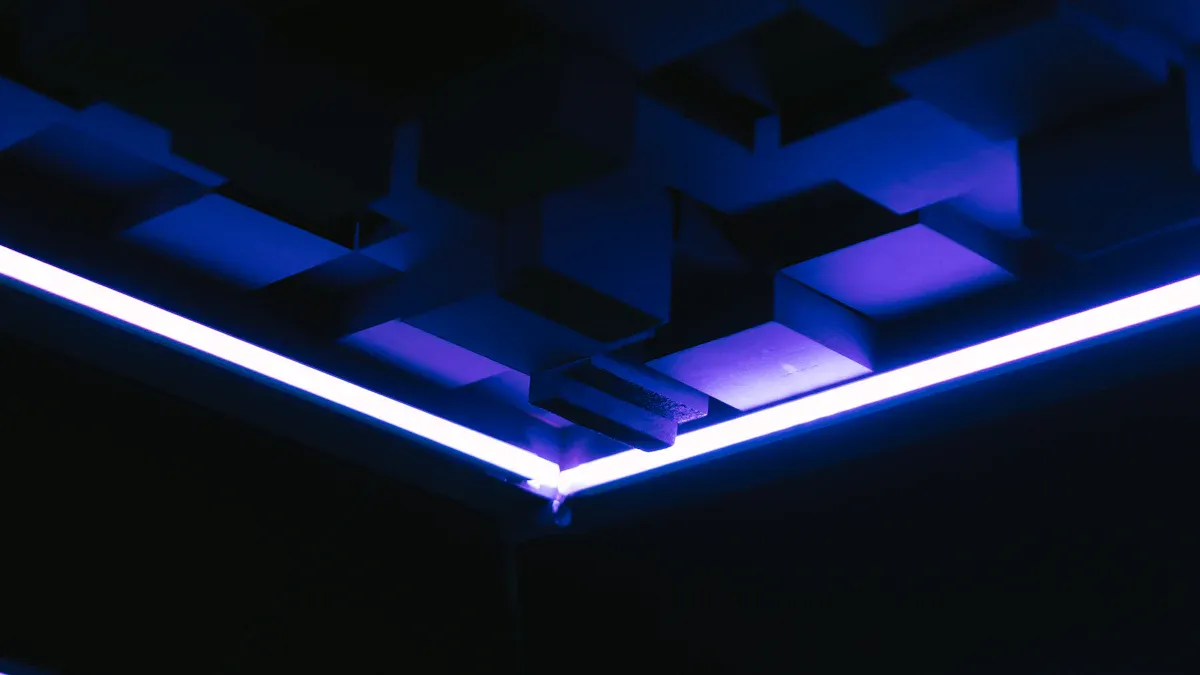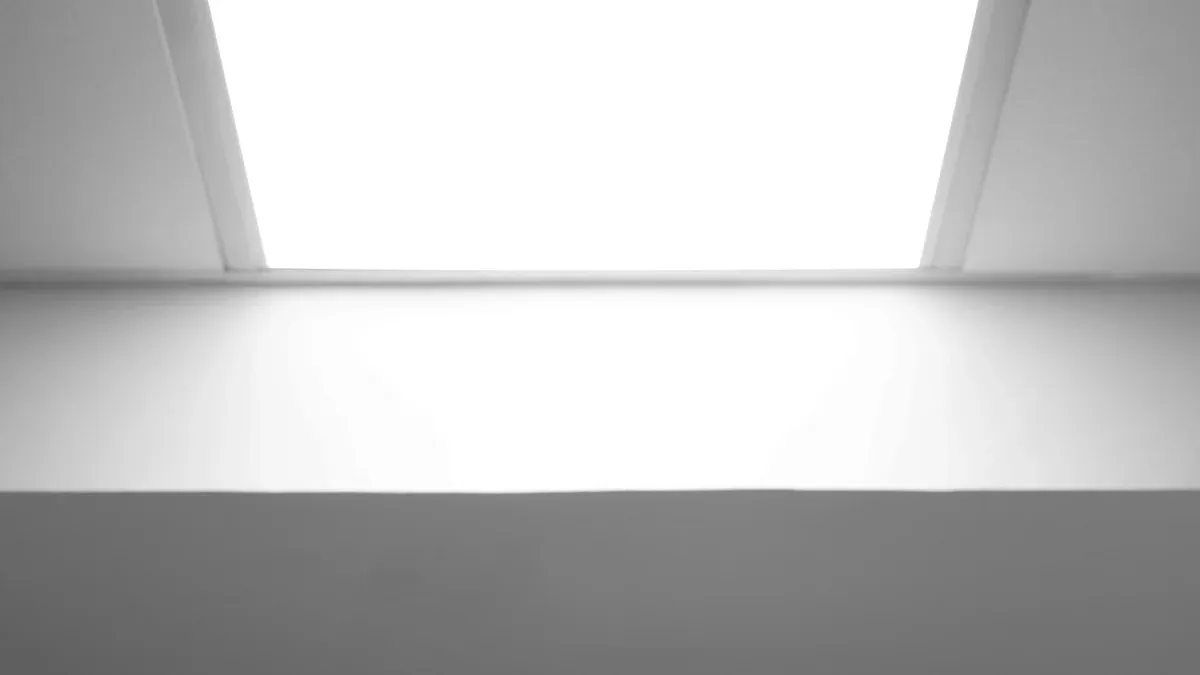LED Light Downlight Installation

LED Light Downlights are a smart way to illuminate your home or office. They use less energy and save you money. For example:
Homes with regular bulbs consume about 2,000 kWh yearly, costing $215.
Utilizing LED lights can save around $4,000 over 20 years.
LED Light products last longer and stay cooler. You can replace old lights or add new LED Light Downlights to enhance your space and contribute to environmental sustainability. Solar Light options are also available for those seeking eco-friendly choices. With the right LED lights, you achieve better brightness while saving more money.
Key Takeaways
LED downlights use less energy and cost less. Changing from normal bulbs can save around $4,000 in 20 years.
Safety is very important when installing. Always turn off the power and check with a voltage tester to stay safe.
Pick approved materials for your LED downlights. This makes your lights safer and work better.
Tools and Materials for LED Light Downlight Installation
Essential Tools for Installation
To set up LED light downlights, you need proper tools. These tools help make the job safe and easy. Below is a list of important tools:
Tools Needed | Purpose |
|---|---|
Drill | Makes holes to attach the downlights. |
Drill bits | Helps the drill cut neat openings. |
Drywall saw | Cuts through ceiling material smoothly. |
Hole cutting drill attachment | Makes holes the right size for downlights. |
Voltage tester | Checks if wires have power before working. |
Fish tape reel | Pulls wires through tight spaces. |
Safety glasses | Shields your eyes from dust and dirt. |
Lineman's pliers | Cuts and bends wires easily. |
Stud finder | Finds ceiling beams to avoid damage. |
These tools help you work safely and accurately. Always wear safety glasses and check wires for electricity before starting.
Materials You’ll Need
The materials you pick affect how well your LED light downlights work and last. Here’s what you’ll need:
Region | Critical Materials | Performance Statistics |
|---|---|---|
North America | LED chips, drivers, heat sinks | Keeps 90% brightness after 40,000 hours; saves 1.2 terawatt-hours in 2023. |
European Union | LED chips, drivers, heat sinks | At least 85 lumens per watt; 62% more installations from 2020 to 2022. |
Asia-Pacific | LED chips, aluminum heat sinks | Stays below 60°C surface temperature; 40% rise in luxury mall sales. |
Choose materials with certifications like JIS, CCC, or CB. These ensure safety and good performance.
Certification | Description |
|---|---|
JIS Certification | Meets Japanese safety and environmental rules. |
CCC Certification | Required in China for safety and testing standards. |
CB Certification | International approval for meeting IEC rules, easing global trade. |
Certified materials make sure your LED light downlights work well and are safe to use.
Getting Ready for LED Light Downlight Installation
Turn Off Power and Stay Safe
Before installing LED light downlights, safety comes first. Turn off the electricity at the main fuse box. Use a voltage tester to check that no power is in the wires. This step helps prevent shocks or accidents.
Wear safety gear like gloves and glasses to stay protected. Use tools with insulation to reduce risks. Follow local electrical rules to meet safety standards. Being prepared keeps you safe and makes installation easier.
⚠️ Tip: Unlike old bulbs, LED lights stop glowing right after power is off. Handle them carefully to avoid any electrical danger.
Mark Where Lights Will Go
Placing your LED light downlights correctly gives even lighting. Plan the layout based on your room's size and furniture. Use a tape measure and pencil to mark spots on the ceiling.
Keep these tips in mind:
Space lights evenly for balanced brightness.
Don’t put lights too close to walls or corners.
Check for ceiling beams to avoid drilling into them.
Good planning makes your space look better and work well.
Check Ceiling and Wires
Before cutting the ceiling, check the space above it. Make sure there’s enough room for the LED light downlights and their parts. Look for pipes, ducts, or insulation that might block the installation.
Inspect the wires to ensure they are safe and ready for use. Keep electrical connections in proper boxes to stop heat or sparks. Use good-quality tape to secure the wires. Some downlights have special cables that look like regular ones, so check them carefully.
🛠️ Note: If wiring or ceiling issues seem hard, hire an electrician. They can help follow safety rules and avoid problems.
Step-by-Step Guide to Installing LED Light Downlights

Cut Holes in the Ceiling
Start by cutting holes for your LED Light Downlights. This step ensures the lights fit well and look neat. Follow these simple steps:
Check for Obstacles: Use a stud finder to locate beams, pipes, or wires. Avoid cutting into these areas.
Mark the Spot: Measure and mark where each downlight will go. Use a template or the light's housing to trace the hole.
Cut the Hole: Use a drywall circle cutter for clean cuts. If unavailable, a drywall saw works too.
🛠️ Tip: Make sure the ceiling is clear and hollow before cutting. This avoids damaging hidden structures.
Taking your time here helps avoid mistakes and extra repairs later.
Connect the Wiring
After cutting the holes, the next step is wiring the LED Light Downlights. Proper wiring ensures the lights work safely and efficiently. Here’s how to do it:
Inspect the Wires: Check the wires for damage. Replace any worn or broken ones.
Follow Safety Standards: Make sure the wiring meets safety rules. For example:
Compliance Method
Description
Manufacturer Certification
Certified fixtures are safe to use near flammable materials.
Luminaire Barrier
Use barriers that meet safety standards like AS/NZS 5110:2011.
Clearance Observance
Leave enough space to prevent overheating and allow heat to escape.
Connect the Wires: Match the downlight wires to the ceiling wires. Use wire connectors to secure them.
⚡ Important: Never cover downlights with insulation. This can cause overheating and shorten their lifespan.
If you’re unsure about wiring, ask a licensed electrician for help.
Secure the Downlights
Once wired, secure the LED Light Downlights in place. This step keeps them stable and working properly.
Insert the Downlight: Push the downlight gently into the hole. Most have spring clips to hold them securely.
Check the Fit: Make sure the downlight is even with the ceiling. Adjust the clips if needed.
Test Durability: Gently pull on the light to ensure it’s firmly attached.
Modern downlights are built to last. For example:
Feature | Description |
|---|---|
Shatterproof Construction | Made with strong materials like acrylic to avoid breaking. |
Resistance to Contaminants | Keeps lights clean and working in different conditions. |
High IP Rating (IP69K) | Protects against dust and water for long-lasting use. |
💡 Pro Tip: Use downlights with a high IP rating in damp areas like bathrooms or kitchens.
By following these steps, you’ll install lights that look great and work efficiently in your space.
Testing and Adjusting LED Light Downlights
Test the Installed Lights
After securing the LED Light Downlights, check if they work. Testing makes sure the lights are safe and working well. Turn the power back on at the fuse box. Use the switch to see if each light turns on properly.
Follow these testing steps for a complete check:
Test Type | Sample Size | Details |
|---|---|---|
General Check | AQL S-1 | Look for scratches or visible problems. |
On/Off Test | At least 2 lights | Confirm lights turn on and off smoothly. |
Screw Tightness | Special tools | Check screws and clips are firmly attached. |
Interference Test | 5–8 lights | Ensure no electromagnetic issues occur. |
These tests confirm your setup is safe and works well. If a light doesn’t work, check the wires or ask an electrician for help.
💡 Tip: Test lights in bright and dim rooms to check brightness levels.
Make Final Adjustments
Once testing is done, fix any small issues. Adjust the lights so they sit flat against the ceiling. If one looks uneven, fix the clips or housing until it fits right.
For dimmable LED Light Downlights, test the dimmer switch. If the lights flicker, check if the dimmer matches the lights.
Clean the lights to remove dust or smudges. This makes them look better and shine brighter.
🛠️ Note: Don’t use harsh cleaners that might scratch the light’s surface.
By testing and adjusting, your lights will look great and work perfectly.
Safety Tips and Avoiding Common Mistakes
Important Safety Precautions
Staying safe is key when installing LED light downlights. Follow these steps to avoid accidents and make the process easier:
Turn Off Power: Shut off electricity at the main breaker first. Use a voltage tester to ensure no power is in the wires.
Wear Protective Gear: Put on safety glasses and insulated gloves. These protect you from dust and electrical risks.
Follow Manufacturer Guidelines: Read the instructions that come with your LED downlights. This helps you install them correctly and avoid damage.
Maintain Ventilation: Place downlights in areas with good airflow. This prevents overheating and keeps LEDs working well.
Choose Certified Products: Pick downlights with certifications like JIS or CB. Certified products are safer and better quality.
Some LED downlights use 405 nm technology for extra safety. These lights help reduce harmful germs like SARS-CoV-2 and Influenza-A. They are great for schools and shared spaces.
⚠️ Tip: Keep downlights away from flammable items. This lowers the risk of fires.
Common Errors to Avoid
Mistakes during setup can cause problems or make lights unsafe. Avoid these errors to keep your LED downlights working well:
Overheating: Don’t run LEDs at full brightness in tight spaces. Poor ventilation can damage them.
Voltage Fluctuations: Use surge protectors to guard against power spikes.
Incompatible Dimmers: Make sure your dimmer switch works with LED lights. This stops flickering.
Neglecting Drivers: Replace broken drivers quickly to keep lights working properly.
Improper Cleaning: Follow cleaning instructions to avoid harming the lights.
Fixing these issues helps your LED downlights last longer and work better.
💡 Pro Tip: Test your lights after installing them. This helps find wiring or dimmer problems early.
Putting in LED downlights makes your space look modern and saves energy. These lights work well in homes, offices, or schools. They lower electricity bills and brighten rooms better. Starting costs or setup changes can be handled with good planning. Use this guide to get a neat and professional finish.
FAQ
What is the ideal spacing between LED downlights?
Space downlights 4 to 6 feet apart for even lighting. Adjust based on room size and ceiling height for the best results.
Can I install LED downlights in a bathroom?
Yes, but choose downlights with a high IP rating (IP65 or higher). These resist moisture and ensure safe operation in damp areas.
Do LED downlights work with dimmer switches?
Not all LED downlights are dimmable. Check the product specifications and use a compatible dimmer switch to avoid flickering or damage.
See Also
Comprehensive Instructions for Installing High Bay LED Fixtures
Exploring LED Replacement Lights: Varieties, Advantages, and Setup
Guide to Installing Light Poles and Posts Effectively
Understanding Recessed Lighting: Varieties, Setup, and Design Tips
Utilizing LED Area Lights: Uses, Advantages, and Installation Tips

